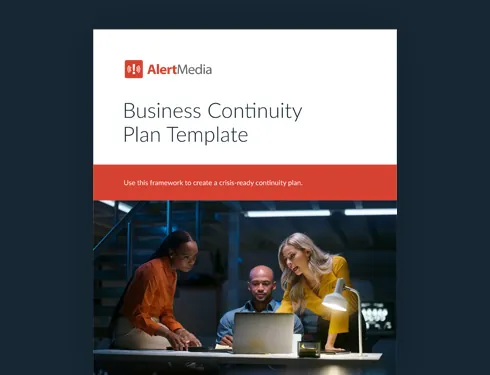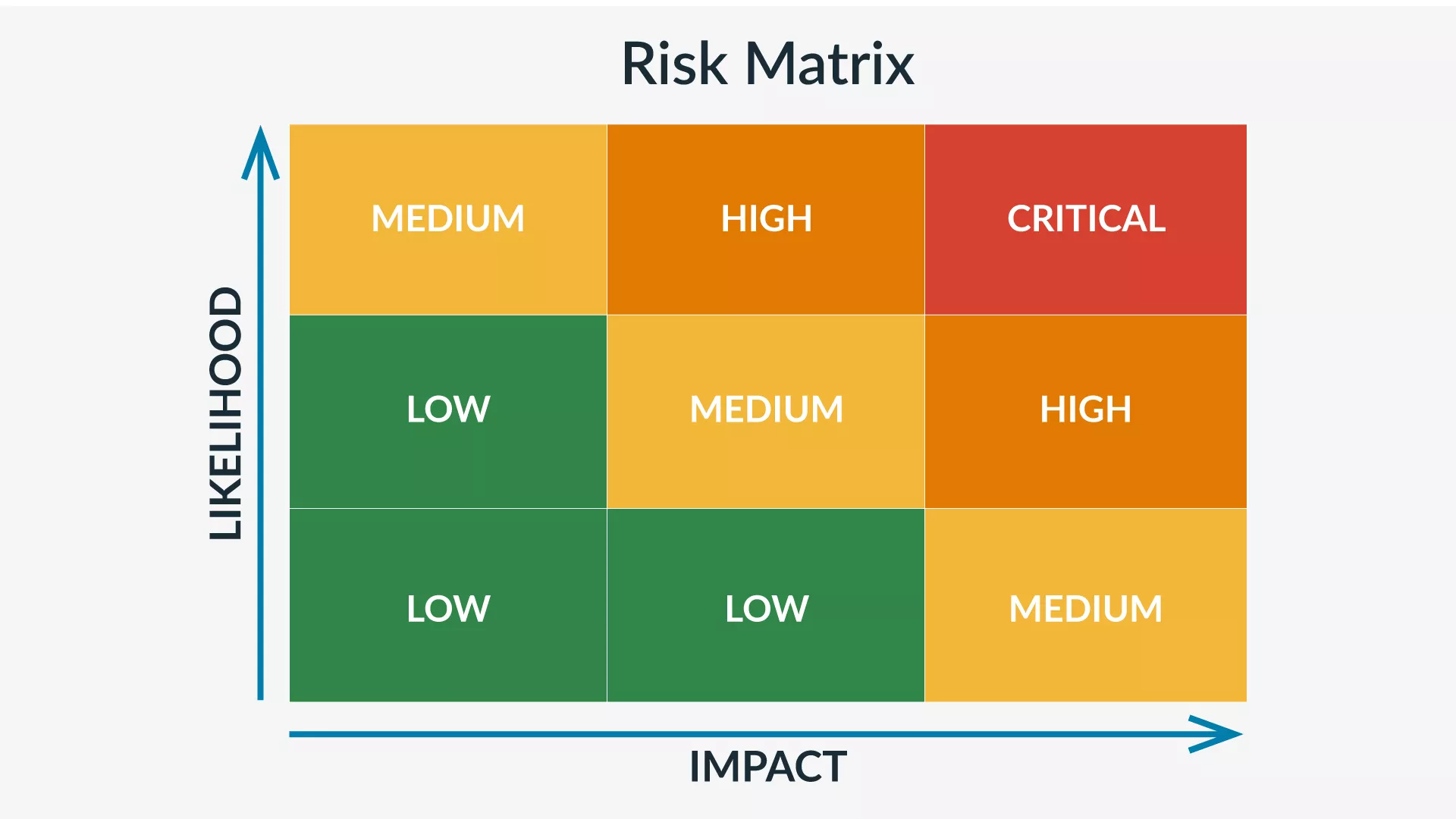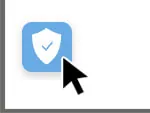An ISO 22301 checklist helps you turn business continuity management requirements into clear, auditable steps, so you can stay compliant and audit-ready with confidence.

ISO 22301 Checklist for Confident Business Continuity Management Compliance

How prepared would you be if a bomb went off outside your office this weekend? Even if your employees escaped unharmed and your property undamaged, the disruption would likely affect your operations, at the very least.
Liberty Mutual Insurance experienced this exact scenario in the wake of the Boston Marathon bombings. “Our team was onsite the next morning, and we set up an emergency command center,” said Ashley Goosman, Risk Manager of Business Continuity & Crisis Management Specialist at Liberty Mutual. “We couldn’t get into the offices where my team was typically located because it was part of the crime scene. So, we had to improvise and were in a conference center on our main campus across the street.”
Adapting quickly takes practice and planning, even when you can’t foresee every possible contingency.
Juggling the many business continuity challenges can seem daunting, but you don’t need to reinvent the wheel to address them. ISO 22301 provides a framework for security, resilience, and business continuity. Maintaining compliance means embedding continual improvement and internal audit processes into your BCMS. Read on as we explore ISO 22301 and review an audit checklist to ensure your organization can survive and thrive in any scenario.
Business Continuity Plan Template
What Is ISO 22301:2019?
Developed by the International Organization for Standardization (ISO), ISO 22301:2019 is a standard for establishing business continuity management systems (BCMS). The standard lays out a framework for organizations to plan, implement, and maintain a BCMS so companies can deal with disruptive incidents and formalize their resilience management efforts. In addition to covering BCMS controls, it serves as an ISO standard for business continuity plans (BCPs).
ISO 22301, first released in 2012 and then updated slightly in 2019 (ISO 22301:2019), sets the business continuity and resilience standard. Unlike industry-specific standards, ISO 22301 is flexible and applies to companies of any size or type, though some requirements apply only to certain businesses.
General ISO 22301 controls and framework
Rather than relying on strict controls, ISO 22301 follows a framework grounded in 10 clauses.
| Clause 1: Scope Explains the purpose of ISO 22301 and how organizations can improve business continuity by developing a BCMS. | Clause 2: Normative References While this section typically lists essential documents for cross‑referencing, ISO 22301 has none. |
| Clause 3: Terms and Definitions Standardizes core business continuity terms—such as BCMS, BIA, and recovery time objective (RTO)—so stakeholders share a clear, common vocabulary. | Clause 4: Context Requires organizations to define the scope of their BCMS, identify stakeholders and other interested parties, and understand internal and external factors that affect continuity. |
| Clause 5: Leadership Emphasizes top‑management commitment. Leaders should appoint a continuity team, define roles, and allocate resources across the organization. | Clause 6: Planning Covers the development of plans for risk assessment and business impact analysis (BIA), along with documented strategies and objectives that feed into your overarching business continuity plans. |
| Clause 7: Support Addresses the resources, competence, awareness, communication plans, and documented information needed to implement and sustain the BCMS effectively. | Clause 8: Operation Requires organizations to implement and control the processes needed to meet continuity requirements, including exercising and testing those processes to ensure they work under real‑world disruptions. |
| Clause 9: Performance Evaluation Calls for monitoring, measuring, analyzing, and evaluating BCMS performance, including internal audits and management reviews. | Clause 10: Improvement Encourages continual improvement, corrective actions, and updates to the BCMS to address nonconformities and keep strategies aligned with evolving business continuity strategies. |
Why an ISO 22301 checklist matters
An ISO 22301 checklist is a practical tool for reviewing a BCMS. Its purpose is to help organizations look at their processes in an organized way, confirm that requirements are in place, and spot any gaps before they become issues. A checklist also makes it easier to prepare for audits or certification by showing clear evidence that each area has been addressed.
A BCMS is not a piece of software but a process framework that brings together all parts of a business continuity plan. A practical checklist breaks this framework into manageable items so each element can be reviewed step by step. Common areas that appear on an ISO 22301 checklist include:
- A business continuity policy with defined scope and objectives.
- Risk assessment and risk management practices.
- A business impact analysis that sets continuity requirements.
- Emergency response procedures, such as evacuation plans or active shooter guidance.
- Communication processes, including how employees are segmented for notifications.
- Roles and responsibilities for stakeholders who manage emergencies.
- Supply chain dependencies linked to business continuity.
- Resources for managing incidents like infrastructure disruptions.
- Workforce planning, with essential roles and backup contacts.
- RTOs and documented recovery strategies.
- Cybersecurity and its integration with information security management systems (ISMS).
By working through these items in checklist form, organizations can confirm that their BCMS covers all required areas and is ready to withstand disruptions and external review.
Integrating with other ISO standards
Companies complying with ISO 22301 will often want to adhere to other related standards, such as:
ISO 22301 simplifies integrations by following Annex SL, the unified structure for all ISO system management standards. Once your company understands this structure, implementing other standards becomes easier.
Watch this step-by-step video to learn how to create and optimize a plan that ensures your operations continue running smoothly—no matter what.
ISO 22301 Audit & Compliance Checklist
ISO 22301 is divided into 10 clauses. The first three provide background, while the remaining seven outline the requirements that auditors will test. By reframing the clauses as steps in a checklist, you can use them as a practical guide to prepare for certification, identify gaps, and demonstrate a robust BCMS.
#1: Define the organization’s context and scope for BCM (Clauses 1–4)
Start with clarity. Define exactly what your BCMS covers and, as importantly, what it doesn’t. If the scope of the BCMS isn’t spelled out, auditors won’t know which systems, sites, or business units you’re accountable for. Think of this as setting the boundaries of the playing field.
This checkpoint also anchors your BCMS in your organization’s reality. That means noting any outside standards or regulations you’re aligning with, documenting the organization’s context, and creating a glossary so acronyms like RTO or MAD (maximum allowable downtime) are consistently understood across teams.
When reviewing evidence for this step, look for documentation that shows you’ve thought through:
- Which sites, systems, and departments are in scope (and which are not).
- Internal and external stakeholders, from executives to third-party providers.
- The most critical processes keep your organization running (e.g., patient record access for healthcare, order fulfillment for retail).
- Legal or regulatory requirements that shape continuity needs (HIPAA, PCI DSS, GDPR, local data-protection laws).
- An up-to-date BIA reflecting your current environment and supporting your business continuity objectives.
It may feel basic, but the rest of your checklist will be shaky without this foundation. Auditors expect a clear, current, and defensible scope backed by evidence and measurable outputs demonstrating alignment with ISO 22301.
#2: Establish leadership commitment and assign roles (Clause 5)
ISO 22301 doesn’t provide a ready-made list of roles, but it does require that responsibilities and authorities for business continuity are clearly defined and assigned. This is where leadership commitment becomes visible: Top management must show accountability for the BCMS and delegate continuity responsibilities across the organization. Without this structure, recovery efforts can become scattered or stall altogether.
In practice, many organizations map continuity responsibilities to roles familiar to them from an emergency response. For example, an “incident commander” in an emergency response plan has a continuity counterpart who activates the BCMS and leads recovery efforts. Assigning these roles in advance reduces confusion, provides clear points of accountability, and ensures resources are directed where needed most.
Here’s a table showing common continuity roles that organizations create to meet ISO 22301 requirements, alongside the kinds of positions best suited to take them on:
Continuity role | Description | Best candidate(s) |
| Continuity Manager / Coordinator | Provides overall leadership for continuity planning and execution; ensures the BCMS is maintained, tested, and activated during disruptions | Senior manager, head of operations, or designated BC lead |
| Communications Lead | Manages internal and external communication during disruptions; ensures messaging is timely, accurate, and consistent | Corporate communications, PR, or HR |
| Risk & Safety Coordinator | Assesses risks during incidents, advises on protective measures, and ensures employee safety is a consideration in continuity strategies | Health & safety officer, facilities manager |
| Recovery Team Leads | Own the recovery of specific business functions or processes; ensure their area’s BIA and recovery strategies are carried out | Department or process owners |
| Facilities / Site Coordinator | Oversees relocation to alternate sites and ensures continuity of work environments | Facilities manager, office manager |
| Documentation & Audit Specialist | Maintains continuity records, tracks incident response, and prepares documentation for audits and continual improvement | Compliance officer, risk manager, or business analyst |
This step centers on showing that continuity is built into existing roles and that leadership has made those responsibilities clear.
For audit purposes, reviewers will expect to see:
- An organization chart showing continuity responsibilities
- Evidence that leadership has formally approved role assignments
- Job descriptions or policies that reference BCMS responsibilities
#3: Conduct risk assessment and business impact analysis (Clause 6)
This step is where the ISO 22301 checklist really proves its value. A structured risk assessment and BIA clarify which threats matter most, how they affect your organization, and what realistic recovery objectives are. By working through a defined list, you can be confident that nothing critical is missed.
- Identify threats – Review risks such as ransomware, natural disasters, supply chain disruptions, or power outages. Confirm each is documented and rated for likelihood and impact.
- Set continuity objectives – Define measurable goals, e.g., “resume payroll within 24 hours” or “restore customer service systems in under two hours.”
- Establish downtime limits – Document RTOs and MADs for each critical process.
- Review supporting documentation – Confirm that continuity policies, strategies, and risk registers are current and reflect your organization’s present environment.
- Check activation procedures – Ensure there are clear, documented steps for declaring an incident, approving emergency expenditures, and communicating with staff, clients, and stakeholders.
When these elements are part of your checklist, you’re not just verifying their existence—you’re verifying that they’re current, realistic, and auditable. A helpful step is to plot your findings in a risk matrix. A risk matrix helps visualize how likely each threat will occur and how severe the impact would be.
By placing risks on a simple grid of likelihood vs. impact, you create a clear picture of which threats demand immediate attention and which can be managed with fewer resources. This visualization becomes a practical tool for prioritizing continuity strategies and explaining decisions to auditors and leadership alike.

#4: Develop business continuity strategies and document plans (Clause 7)
A continuity plan is only as strong as the support behind it. Clause 7 asks whether your organization has allocated the right resources, training, and communication procedures to bring continuity strategies to life. Without these, plans remain theory on paper.
As part of your checklist, confirm that your documented plans are comprehensive and accessible. Do employees know where to find them? Have they been written in plain language so non-specialists can follow them under pressure? Auditors will often ask to see whether your plans cover critical areas such as:
Recovery strategies for each essential business process.
Clear roles and responsibilities that match the resources assigned.
Communication procedures that outline how updates are shared internally and externally.
Documentation control: version history, approval dates, and owners responsible for keeping plans current.
Think of this step as a bridge between planning and execution. You’re confirming that strategies aren’t just identified in a risk assessment or BIA but supported with real resources, tested documentation, and clear communication pathways.
#5: Put continuity plans into action and train your teams (Clause 8)
It’s not enough to have continuity plans documented; auditors and stakeholders want evidence of implementation, testing, and consistent use. Start by asking: Does your BIA connect directly to your recovery timelines and objectives? Are there runbooks or playbooks for incidents such as a data center outage or a supplier failure? Have you confirmed that external stakeholders—vendors, partners, and clients—are accounted for in your strategies?
A strong checklist also verifies that plans are version-controlled and properly distributed. Leadership may prefer high-level overviews like slide decks, but frontline staff need detailed, step-by-step instructions. Both audiences must have what they need, in the format that works best for them.
Regular training is essential for making business continuity a working practice instead of a shelf exercise. If only a few individuals know how the BCMS operates, the organization is vulnerable; knowledge has to be spread widely enough that plans can be activated under any circumstances.
Organizations should think about training in layers, specifically:
- Onboarding training so new staff understand their role in continuity from day one
- Refresher courses to keep knowledge current and address lessons learned from recent tests or incidents
- Role-specific instruction for continuity coordinators, communications leads, or recovery team members so they can perform their tasks under pressure
To keep staff aligned with changes, provide practical updates: post revised procedures on the intranet, send short update bulletins, or host brief training sessions when the checklist, audit approach, or ISO 22301 requirements shift. These updates ensure everyone is working from the same playbook and that auditors will see continuity is embedded across the organization, not siloed to one team.
#6: Evaluate and track your performance (Clause 9)
You can’t improve what you don’t measure. At this stage, your checklist should push you to define success and failure. Have you set meaningful KPIs and metrics, like “percentage of RTOs met in tests” or “time to restore critical applications”? Are internal audits being conducted, and do you gather employee feedback through surveys or interviews? Just as important, are these results escalated to management and turned into documented improvement plans? Without leadership incident review, data points remain numbers instead of drivers for change.
Performance evaluation also means regularly testing your continuity plans. Tabletop exercises—discussion-based sessions where leaders walk through scenarios—help identify policy and communication gaps. Full-scale drills go further, simulating disruptions to validate recovery timing, resource availability, and team coordination. Documenting the results of these exercises is as important as conducting them: Auditors will look for evidence that gaps were identified, addressed, and carried forward into your improvement process.
For example, a bank might discover that teller systems recover on time while online banking lags. Audit evidence should show not just that the gap was noticed, but that it led to a documented improvement plan. By pairing measurable KPIs with real-world exercises, you demonstrate that your BCMS is designed to adapt, improve, and prove its effectiveness over time.
#7: Drive corrective actions and continual improvement (Clause 10)
The final step in your ISO 22301 checklist is embedding improvement into your organization’s operations. Business continuity must evolve with every audit, exercise, or real incident—otherwise plans quickly become outdated. A strong checklist should capture gaps and weaknesses, along with how they’re addressed, tracked, and fed back into the BCMS.
Your checklist should confirm that the organization:
- Logs nonconformities and assigns corrective actions with clear owners, deadlines, and documented outcomes
- Holds structured reviews of audit results, checklist effectiveness, and BCMS performance
- Runs lessons-learned sessions after incidents or simulations and updates plans based on findings
- Sets measurable goals for improvement (e.g., reducing disaster recovery time gaps, boosting training participation) and monitors progress
- Schedules training, exercises, and reviews across the year, making improvement cyclical rather than a one-time activity
- Keeps the checklist itself updated, with input from multiple departments, reflecting current risks, roles, and processes
Handled this way, continual improvement becomes part of the culture. Auditors will see that your organization isn’t treating the checklist as a static template but as a living tool that adapts, strengthens resilience, and proves ongoing commitment to ISO 22301.
Tips for Maintaining ISO 22301 Compliance
While the initial implementation phase does much of the heavy lifting, you’ll still need to maintain compliance with ISO 22301. Keep your BCMS and supporting documentation up to date, even as your company evolves. You may need to adjust your BCMS based on:
- New locations or staffing changes
- Adjustments to emergency response team responsibilities
- Technology updates that impact business continuity plans
- Operational shifts that change response and recovery timelines
Maintaining compliance is easier when everyone works together. So, create a team-wide commitment to continuous improvement. This means regularly testing your business continuity solutions and procedures and finding ways to improve.
Learning from the outcome is vital if you need to activate your plans during an emergency. After recovery, review everything that happened to identify areas for improvement and shape a better and safer approach for the future.
Overcoming ISO 22301 Audit Challenges With Practical Fixes
Adopting a structured approach to business continuity often means shifting away from how things have always been done. That transition comes with a learning curve, but the short-term discomfort of standardization pays off in audit readiness, resilience, and clarity. Below are some of the most common challenges organizations face when creating or using ISO 22301 checklists, along with solutions that make the process more manageable.
Challenge | Why it’s a risk | Practical solution |
| Unclear understanding of ISO 22301 requirements | Teams may misinterpret what auditors expect, leading to gaps in documentation or processes. | Provide training sessions on ISO 22301, focusing on practical application rather than theory. Use plain-language summaries to help staff connect requirements to daily work. |
| Overly generic or incomplete checklists | A checklist that isn’t tailored to your organization misses critical risks and leaves you unprepared. | Customize checklists to reflect your business’s processes, risks, and regulatory obligations. Involve department leads to make sure nothing essential is overlooked. |
| Lack of internal ownership or leadership support | Without clear accountability, checklist activities may be ignored or treated as a box-ticking exercise. | Assign a continuity coordinator to manage the checklist, with leadership explicitly endorsing its use and reviewing outcomes. |
| Difficulty gathering and organizing required documentation | Missing or disorganized evidence makes it hard to prove compliance during an audit. | Use a centralized system (e.g., a shared repository) to store policies, risk registers, training logs, and exercise results in one place. |
| Inconsistent application across departments | Some teams may apply the checklist rigorously while others skip steps, leading to uneven preparedness. | Standardize checklist use with cross-department training and periodic reviews to confirm consistency. |
| Insufficient follow-through on corrective actions | Gaps identified during audits or exercises remain unresolved, undermining continual improvement. | Assign corrective actions with owners, deadlines, and verification steps. Track them in the same system as your checklist. |
| Keeping the checklist current | Organizational changes, new risks, or updated standards can make checklists outdated. | Schedule quarterly or biannual reviews to refresh checklists, incorporating lessons learned from audits, incidents, and exercises. |
The best organizations treat these challenges as opportunities to mature their BCMS. Each audit cycle offers lessons. By updating checklists based on feedback and fostering a culture where improvement is ongoing, you’ll transform the checklist from a compliance tool into a driver of resilience and confidence.
Quick Overview of the ISO 22301 Certification Process
Not all companies implementing ISO 22301 need to seek certification. However, some industries, like healthcare, energy, and transportation, have legal certification requirements. For other organizations, seeking certification can provide internal peace of mind and serve as a selling point for customers.
There are three significant steps in the certification process:
Choosing a certification body
ISO develops and publishes standards, but they don’t test or certify for compliance. Instead, private, third-party companies offer certification based on ISO standards.
Many organizations will seek accreditation to prove they’re following the appropriate guidelines. We recommend consulting the International Accreditation Forum to vet the companies’ reputations when looking for a certification body.
Maintaining ISO 22301 certification
ISO 22301 certifications are valid for three years. In the first two years, you must complete surveillance audits, which are less intense than the initial approval but ensure compliance with ISO 22301. At the end of the third year, you’ll undergo a recertification audit. If the audit finds any issues, you can address them and keep your certification.
The ISO 22301 audit checklist
Certification bodies can set their own process—but many follow the same structure: The process often begins with a pre-certification check, including an optional gap analysis. The certification body will review your company’s documentation and implementation, then make any recommendations for adjustment.
The formal audit process involves two steps:
- A review of your business continuity management system and documentation
- An assessment of the ISO 22301 implementation and organizational controls to ensure it’s working as intended
If your company fails either step, you must repeat the process and pay for another audit.
Benefits of ISO 22301 Implementation
Maintaining ISO 22301 compliance not only prepares your company to handle operational threats but also offers several added benefits. By aligning continuity processes with this international standard, organizations can demonstrate resilience through audits and ongoing management reviews.
Minimize downtime and disruptions
Even short interruptions can have a significant impact on business operations. The ISO 22301 standard calls for documented recovery plans and tested business continuity strategies that allow you to return to normal activities quickly. These structured responses reduce financial loss and reassure stakeholders that services will continue with minimal disruption.
Maintain legal and regulatory compliance
For many industries, ISO 22301 compliance is not optional. Top management is expected to demonstrate accountability for meeting regulatory requirements, especially in highly regulated sectors like healthcare, transportation, and energy. By implementing ISO 22301 correctly, you strengthen compliance while proving to regulators and auditors that your organization can respond effectively to unexpected challenges.
Improve organizational resilience
Building business resilience means preparing for the unexpected. While business continuity focuses on surviving specific events, like natural disasters, business resilience strengthens one’s ability to handle unforeseen challenges, which in turn strengthens the organization as a whole.
For example, a finance company preparing for disasters might set up remote data centers and backup networks. These measures would also help in cases like a severed network or a minor cyberattack, boosting overall resilience.
Enhance your safety culture
Employees, vendors, clients, and shareholders depend on your company’s safe and smooth operations. Being prepared for emergencies and organizational disruptions is a key component of safety culture. When your whole company buys in, you can count on your team to protect themselves, each other, and your company’s operations.
Following an international standard sends a strong message that you’re committed to business continuity. And when emergencies do arise, your teams will feel confident following their roles in restoring or preserving operations.
Maximize Business Continuity with a Template for Best Practices
Preparing your company to handle a wide range of threats can feel overwhelming. One day it might be a tornado; the next, an intruder at a nearby business. Your organization and its people depend on your readiness.
The BCP ISO standard helps by offering a straightforward process and an internationally vetted framework for minimizing disruptions. By following the ISO 22301 checklist and implementing the standard, you’re not just checking boxes—you’re building a resilient foundation that ensures your company is ready for whatever comes next.






